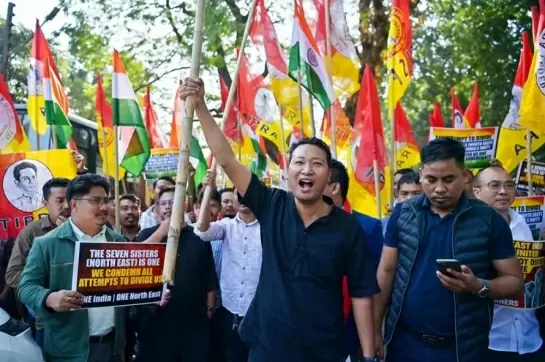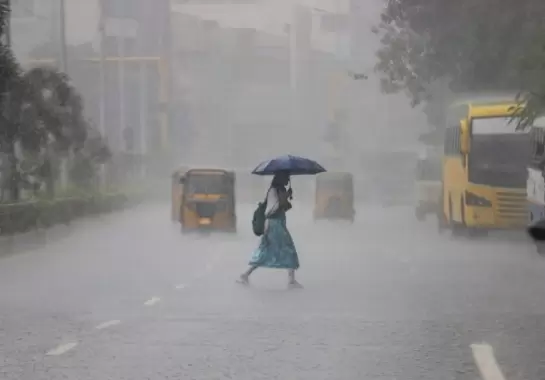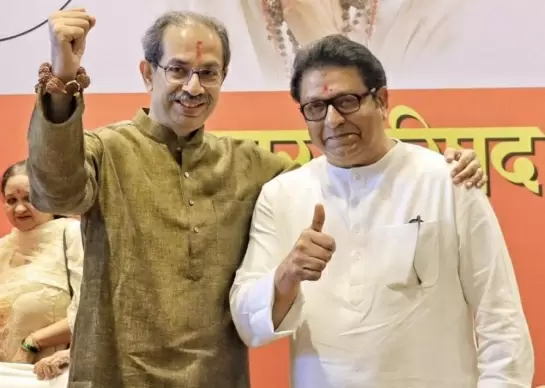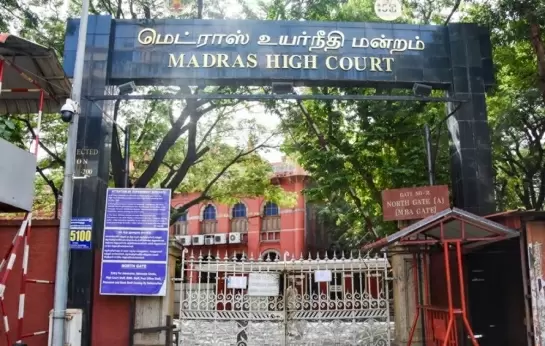Curbing an animalistic crime (Column: Spy's Eye)
22-December-2019
The recent cases of hapless women being caught unawares by groups of vagrants, raped and then brutally murdered -- evidently to block detection and identification of the offenders -- have justly evoked an indignant outburst from the nation. The country should have risen earlier to demand accountability of all those who together constituted the criminal justice system, when the sex crimes against women registered a sharp increase over the last few years.
The horrific cases now being reported show how lawless elements in our cities and towns, having enough money to drink together often in public space, 'hunt in packs' at the sight of a woman in a vulnerable situation. They display a dangerous mix of lack of fear of law, social degeneration hastened by an excessive exposure to nudity and porn and a perception that the governance of the country -- pre-occupied with bigger things -- would tend to leave it to local authorities and not come down 'with a tonne of bricks' in any individual case. This reading of the scene itself suggests what should go into the strategy of providing safety and security to women.
The issue of dastardly crimes against women, that has now become so urgent in the collective conscience of the nation, might have suffered some neglect earlier because it was caught in a hundred other points of debate ranging from freedom to choose personal life style to paucity of moral education. An offence of rape could be committed within the social circle of people known to each other or could arise out of allegations of violation made by women at the work place. On the other hand, it could be the animalistic crime perpetrated either by a gang of drunken predators who happened to chance upon a lone woman or by a degenerate who forced himself on a minor girl separated from her family members.
While the dimensions of the problem connected with the social rights of women or the revival of moral coaching of the young can be worked on, what cannot wait is the prevention of wild attacks on women and children by perverts who went undetected because they could otherwise pass off as a part of the acceptable socio-economic scenario. There is a lot that can be done to counter this hidden menace if the 'dangerous mix' of factors that lies behind it as mentioned earlier, is seriously addressed.
There is certainly a lack of fear of law in the sense that police oversight of the crime situation was not making any social impact and the great instrument of crime prevention -- feed back from the public -- did not exist for reasons that are not far to seek. In practical terms, the much needed detailing of a part of the police station strength for intense patrolling in dark hours in cities was just not there. In olden times the Superintendent of Police (SP) would make a surprise check on this by doing a night out himself or herself -- say once a week. It is not clear if the DGPs were sorting out any resource issues faced by the district concerned in this regard.
A perception has to be created that there was police presence closer to the ground -- in the lanes and mohallas -- since availability of stringent law by itself may not inspire confidence. The Criminal Law Amendment Act, 2018 prescribes death penalty for rape of a girl below 12 and completion of the investigation of the case in two months but this has not yet produced results. Not much use is made of a provision like Sec 42 of the CrPC that empowered a policeman on duty to stop a suspicious looking person on the street and ask him to give his identity, address and a reason for his presence there. Further, consuming alcohol in public places is an offence punishable with heavy fine -- but, in reality, this is a law that is hardly enforced in India. Patrolling after sunset should focus on checking vagrants, ones found loitering and those drinking in public. This will certainly create an environment that demands lawful behaviour on the street.
There is no gainsaying the fact that the rise in the crass offence of rape in a society that is full of elements who barely had the benefit of normal grooming or a purposeful pursuit in life, is attributable substantially to the easy exposure that people -particularly the pervert minds-had today to nudity, obscenity and raw sex on the internet. While the hopes of moral corrections improving the society had their relevance, the enforcement machinery of the state must come into full swing to implement the available laws for establishing the desired level of deterrence. Sections 67 and 67A of the IT Act, for instance, are the most important tools to curtail circulation on the internet, of obscene and sexually explicit material respectively. Major internet platforms must be made to obey the law of the land. On nudity, apart from Sections 292 and 294 of IPC that punish obscene acts in public, the more specific Indecent Representation of Women Act 1986 prohibits obscene advertisements, publications, writings, paintings and figures. Look at the nudity in posters, magazines and the bikini clad mannequins at display all over -- some prosecutions must start at least to show the intent of the state to enforce this law. Also, I&B Ministry seems to be failing to censor films and TV shows for nudity-related violation of the law.
The incidence of rape cases brings out the weakness of law and order situation in the states but it also reflects on the protraction-ridden 'due process of law' that our higher judicial authority on the appellate turf puts up with, even when a most heinous crime ends in conviction at the trial court of a Sessions Judge. These both destroy the deterrence of law that criminals in a well governed country must face. In India, the Centre has enough of locus standi to follow cases like those of Hyderabad and Unnao and take them to their logical conclusion. Among other things, getting a special court created specifically for an individual case that had the potential of destabilising the society, would help. Crime control may be the constitutional responsibility of the states but the frequency of assaults on women is affecting the reputation of India and calls for initiatives from the Centre as well.
Prime Minister Narendra Modi rightly used the occasion of the DGPs Conference held recently at Pune to advise the police chiefs to give urgent attention to the matter of protection of women and expressed that there was need also for the police to improve its own public image. To start with, the Centre should insist on having police stations in populous cities manned by Deputy SPs and the strength of thanas augmented to put patrolling in dark hours as a work of priority. The gazetted officers handling police stations will also in that case be the circle officers of their jurisdiction reporting directly to the SP -- which will save many posts of SDPOs. Police modernisation funds should be used for sharing the burden of this upgrade -- this initiative of the Centre would set the pace of reform in the law and order management.IANS
Venezuelan President, Wife Captured After Strikes On Caracas, Claims Trump
Bengaluru to Get Third-Largest Park After Lalbagh, Cubbon; Basavanna Biodiversity Park Approved
Nation Remembers Tamil Queen Veeramangai Rani Velu Nachiyar Who Fought The British
Treat Gig Workers As Human Beings, Not Disposable Data Points: Raghav Chadha
Missing BJP Leader Found Dead in Pond After Five Days in East Midnapore









